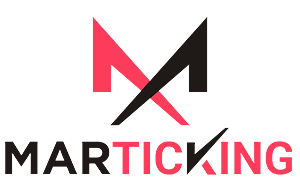In the ever-expanding realm of e-commerce, the key to sustained success lies in efficient operations, seamless processes, and strategic optimization. As businesses navigate the dynamic digital marketplace, the imperative to streamline their e-commerce empire becomes paramount. This exploration delves into the fundamental strategies and practical insights essential for businesses looking to enhance their e-commerce operations, from supply chain management to customer experience.
What is ecommerce?
E-commerce, short for electronic commerce, refers to the buying and selling of goods or services over the internet. It involves online transactions between businesses and consumers (B2C), businesses and businesses (B2B), or consumer-to-consumer (C2C) interactions. E-commerce has become a prevalent and transformative aspect of the modern business landscape, facilitated by advancements in technology and the widespread use of the internet.
Types of e-commerce models
1. Business to Consumer (B2C):
– B2C e-commerce involves transactions between a business and individual consumers. It is the most common form of e-commerce, where businesses sell goods or services directly to end-users.
2. Business to Business (B2B):
– B2B e-commerce involves transactions between businesses. In this model, one business sells products or services to another business.
3. Consumer to Consumer (C2C):
– C2C e-commerce involves transactions between individual consumers. It provides a platform for individuals to buy and sell products or services directly to each other.
4. Consumer to Business (C2B):
– C2B e-commerce occurs when individuals sell products or offer services to businesses. This model is less common but gaining popularity with the rise of influencers and freelancers.
5. Business to Government (B2G):
– B2G e-commerce involves businesses providing goods and services to government entities.
6. Consumer to Government (C2G):
– C2G e-commerce involves individual consumers providing goods or services to government entities.
7. Mobile Commerce (M-Commerce):
– M-commerce refers to any e-commerce activity conducted through mobile devices, such as smartphones and tablets.
8. Social Commerce:
– Social commerce integrates e-commerce with social media platforms, allowing users to discover and purchase products directly within the social media environment.
Ecommerce website
An e-commerce website is an online platform that facilitates the buying and selling of goods or services over the internet. These websites provide a digital storefront for businesses to showcase their products or services, and consumers can browse, select, and make purchases through the website. Here are key features and components commonly found in e-commerce websites:
1. Product Catalog:
– An organized display of products or services with detailed descriptions, images, and pricing.
2. Shopping Cart:
– A virtual shopping cart that allows users to add products they intend to purchase and review their selections before checkout.
3. User Accounts:
– User registration and account management features, enabling customers to create accounts, track order history, and manage personal information.
4. Secure Checkout Process:
– A secure and user-friendly checkout process with multiple payment options (credit/debit cards, digital wallets, etc.) to complete transactions.
5. Payment Gateway Integration:
– Integration with a secure payment gateway to process online payments securely and efficiently.
6. Product Search and Filters:
– Search functionality and filters to help users easily find specific products based on categories, brands, or other criteria.
7. Responsive Design:
– A responsive design that ensures the website functions well and looks good on various devices, including desktops, tablets, and smartphones.
8. Customer Reviews and Ratings:
– Features that allow customers to leave reviews and ratings for products, contributing to transparency and trust-building.
9. Order Tracking:
– Order tracking capabilities that enable customers to monitor the status of their orders from placement to delivery.
10. Security Measures:
– Implementing SSL (Secure Socket Layer) encryption and other security measures to protect customer data and ensure secure transactions.
11. Promotional Features:
– Integration of promotional features such as discounts, coupon codes, and special offers to attract and retain customers.
12. Inventory Management:
– Backend functionality for businesses to manage their inventory, update product availability, and track stock levels.
13 Shipping Options:
– Various shipping options, including standard, express, and international shipping, with transparent shipping costs.
14. Returns and Refunds:
– Clearly defined policies for returns and refunds, along with a user-friendly process for customers to initiate returns.
15. Customer Support Integration:
– Integration of customer support features, such as live chat, contact forms, or a dedicated customer support portal.
16. Analytics and Reporting:
– Integration with analytics tools to track website performance, customer behavior, and sales data for strategic decision-making.
17. Social Media Integration:
– Links to social media platforms and sharing features to enhance brand visibility and customer engagement.
Ebusiness
E-business, short for electronic business, is an online business that refers to the utilization of electronic means and information technologies to conduct business activities. Unlike e-commerce, which specifically focuses on online transactions, e-business encompasses a broader range of digital interactions and processes involved in running and managing a business. Here are key components and aspects of e-business:
1. Online Presence:
– Establishing and maintaining a digital presence, typically through a website or online platform, to showcase products, services, and information about the business.
2. Digital Marketing:
– Leveraging digital channels such as social media, email marketing, content marketing, and search engine optimization (SEO) to promote products, build brand awareness, and engage with customers.
3. E-Procurement:
– Using electronic means for procurement processes, including online sourcing, bidding, and purchasing of goods and services from suppliers.
4. Supply Chain Management:
– Utilizing digital technologies for efficient management of the entire supply chain, from production to distribution to retail.
5. Customer Relationship Management (CRM):
– Implementing digital tools to manage and analyze customer interactions, improve customer satisfaction, and enhance long-term relationships.
6. E-Government:
– In the public sector, e-business includes electronic government services (e-government) that provide citizens with online access to government information, services, and transactions.
7. E-Learning:
– Incorporating digital platforms and technologies for training and education within the business, including employee onboarding, skill development, and continuous learning.
8. E-Banking:
– Integrating online banking services for businesses, enabling electronic financial transactions, fund transfers, and financial management.
9. Online Collaboration:
– Utilizing digital tools for collaborative work within the organization, including virtual meetings, file sharing, and collaborative project management platforms.
10. Mobile Business:
– Embracing mobile technologies to conduct business activities, allowing for mobile commerce (m-commerce) and enabling business operations on mobile devices.
11. Data Analytics and Business Intelligence:
– Implementing tools for data analytics and business intelligence to extract valuable insights from data, support decision-making, and enhance overall business performance.
12. Cloud Computing:
– Adopting cloud-based services for storage, computing power, and software applications, providing scalability, flexibility, and accessibility.
13. Security and Compliance:
– Implementing robust cybersecurity measures and ensuring compliance with data protection regulations to safeguard sensitive business information and customer data.
14. Digital Transformation:
– Embracing a strategic approach to digital transformation, where traditional business processes are reimagined and optimized through the integration of digital technologies.
Conclusion:
In the dynamic landscape of business, the evolution towards e-business signifies a profound shift in how organizations operate, compete, and connect with stakeholders. The integration of electronic means and digital technologies has ushered in a new era of efficiency, innovation, and global reach.
As businesses embark on their e-business journeys, the principles of adaptability, collaboration, and continuous improvement become guiding beacons. The landscape of ecommerce is evolving, and those who embrace the opportunities presented by e-business are poised to thrive in a digitally interconnected world.


